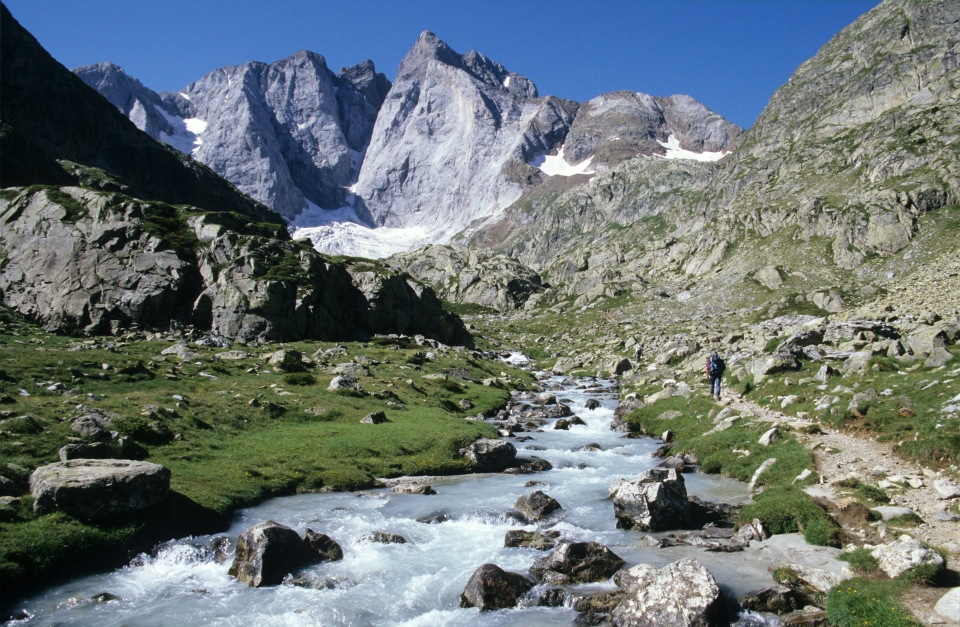Beyond the sheer beauty of the massif and its natural wealth, it's fair to say its reputation stems from the inaccessible nature of its north face, which has been the setting for some of the most remarkable expeditions of recent centuries. The north face of Pique Longue, and particularly the prodigious Couloir de Gaube, are two symbols of Pyrenean mountaineering and remain highly coveted ascents to this day.

The massif presents two strikingly contrasting faces: the dark verticality of Piton Carré, Pointe Chausenque or Pique Longue contrasts with the bright, welcoming visage of the Ossoue Glacier.
The glacier's characteristic horseshoe shape, suspended above the clouds, is visible from peaks as distant as those in Val d'Aran and Pallars. This vast snowfield - the largest along with La Maladeta - is so brilliantly white it appears to have been placed there specifically for snow sports.
But a ski ascent of Vignemale's peaks is no easy feat... To reach the summit of the Pyrenees' most beautiful glacier, you'll need to navigate through deep valleys and tackle extremely steep slopes! The access difficulties, isolation, avalanche risks and altitude all contribute to making Vignemale an extraordinary mountain, with an ascent that represents a true test for any experienced mountaineer!
Vignemale Description
The Vignemale is located in the Bigorre region, near the Cirque de Gavarnie. Access to the massif is via the Gaube Valley from Cauterets, or the Ossoue Valley from Gavarnie. Both these "gateways" to Vignemale are ski-accessible.
Both slopes feature numerous mountain huts welcoming visitors year-round. Gaube and Bayssellance being two of the most renowned refuges, they allow you to split your ascent into two stages or connect with routes leading to the Marcadau and Gavarnie mountains.
Climate
The region has the deepest snow cover in the entire Pyrenees. The Atlantic storms, always particularly fierce, batter the Pyrenees and bring enormous quantities of snow. This geo-climatic characteristic makes the area extremely harsh, even inhospitable in some particularly exposed zones.
Low temperatures and significant weather changes can make the region dangerous at times, substantially increasing the topographic challenges encountered on various routes.

Moreover, avalanches are frequent! We'll highlight three particularly exposed areas:
- The approach to Hourquette d'Ossoue from Gaube, traversing the Hourquette ridges.
- The crossing from Bayssellance refuge to the glacier. It's advisable to attempt this only in good weather conditions. Additionally, it's recommended to descend about 200 metres to find more favourable terrain before ascending more easily to the glacier's moraine.
- The third and most dangerous of all is the complete ascent of the Ossoue precipice. Its narrowness and length make it a veritable death trap, and the height of its walls makes it impossible to assess the quantity and state of accumulated snow. Venturing into these areas requires exceptional daring!

In conclusion, the Vignemale is a site of rare beauty and one of the great treasures of the French Pyrenees, though its ascent should only be attempted by experienced practitioners of high mountain activities.










